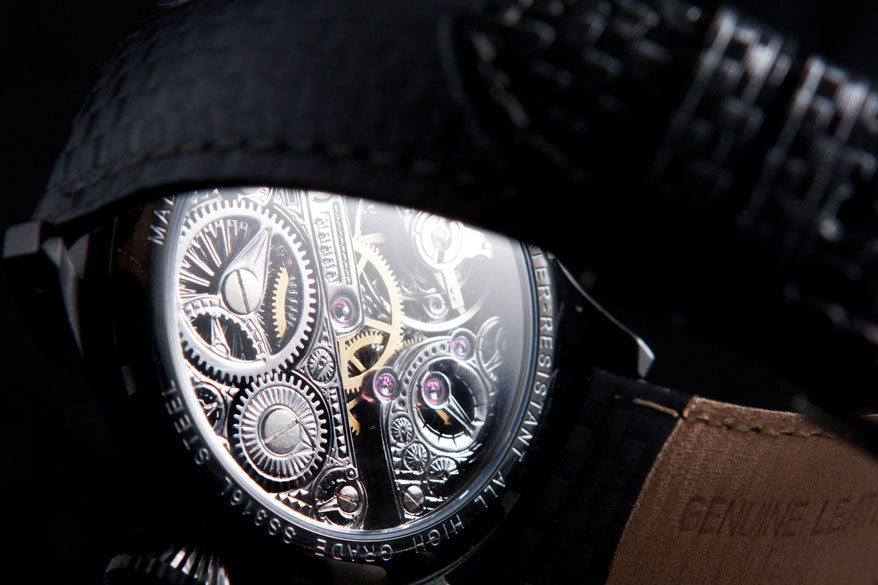Understanding The Different Types Of Mechanical Watch Movements

As the trend towards watch collecting continues to rise, we get a lot of questions from people who are trying to understand what powers a watch. Typically watches house either a quartz movement or a mechanical movement. (Some are also solar powered, but that’s another story.) Further adding a little confusion to the world of mechanical watches is the fact that there are two different types of mechanical watches: Self-winding (aka automatic) movements and hand-wound (manual-wind) movements. It isn’t essential to know how each of these movements works (unless you are watch fan), but it is important to understand the differences so you can make an informed purchasing decision.
While quartz watches are powered by a battery, mechanical watches consist of hundreds of tiny components all perfectly assembled to keep the watch on track. In a mechanical watch, the power source that keeps the hands moving and the functions operating comes from a well-orchestrated set of gears, springs, balances, bridges, barrels and more –all working harmoniously together – much like an engine in a car.

The manual-wind (hand-wound) watch has to be hand wound regularly by the wearer to keep the energy flowing. It has a certain amount of power reserve built into it that will keep the watch working for a specified number of hours if you put it down, but it must be wound by hand by the wearer. Some mechanically minded watch lovers love the idea of taking a moment to wind their watch.
Automatic or self-winding watches have what is referred to as a rotor, or oscillating weight, inside the watch that helps to wind the watch itself with the movement of the wearer’s wrist. The rotor delivers the power to the mainspring, avoiding the need to wind the watch. Like a hand-wound watch, automatic watches have a certain amount of power reserve built into them (usually anywhere from 42 hours to two weeks). If the wearer puts the watch down for longer than the specified amount of time, he or she will have to reset the watch to the proper time before wearing it. However, as long as the watch is being worn, or is picked up again before the power reserve runs out, it will continually wind itself.
Some people prefer automatic winding watches to hand-wound for several reasons. One, of course, is the fact that they don’t have to remember to wind the watch, they just have to wear it. Another reason is the “feel.” Automatic movements have gold rotors, or at least heavy enough rotors, to wind the spring. Often, the wearer can feel the rotor moving with the move of the wrist -- reminding him of the mechanics inside. Some creative watch brands have even relocated the rotor so that the wearer can see it spinning on the dial-side of the watch, providing an attractive dance on the wrist.
Naturally, there are pros and cons to each type of mechanical movement, but people who love mechanical things often prefer to wear a mechanical watch with hundreds of parts inside. They don’t care that if they put the watch down for a few days or a week, then they may have to re-set the time before wearing the automatic watch again and they may also have to wind it (manual-wind watches). For many, that is part of the allure of a mechanical watch. Some environmentally conscious individuals also prefer mechanical watches over quartz watches because the quartz timepieces house batteries that will have to be disposed of.

Mechanical watches will also require servicing – no matter which type of mechanical watch you prefer. This is because, just like a car, the movements consist of lubricants that can dry up over time. There are also gaskets that could need replacing. With advanced technology and high-tech materials such as silicium, that servicing is not nearly as frequent as it was decades ago. Most mechanical watches just need service about every five years.
There is no right or wrong about what type of watch you want to buy. It is strictly a personal choice. But if you would like to learn more about these two types of movements, or to hold the different types of watches in your hands, stop in to visit any time.



